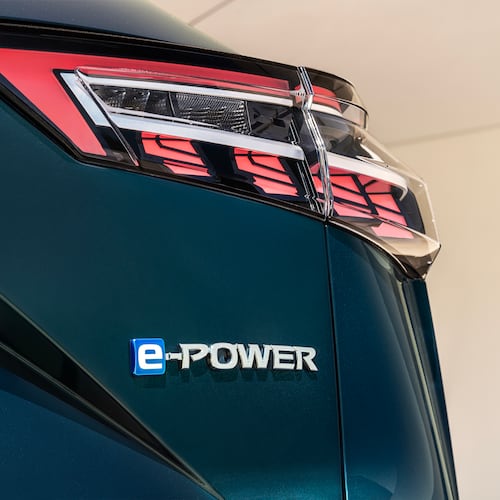Construction of Stagecoach Road lopped off two smallish tracts from Donald Chase’s corn and peanut farm, rendering the land all but useless. Until, one day, Chase had a bright idea.
Why not lay in 10 acres of solar panels, he thought, and connect the power to a nearby substation?
“A farmer’s got to look out 20 years and say, ‘Do I want to rent my land for $250 to $300 an acre or do I want to lock into $1,400 an acre each year?’ ” Chase said recently. “Farmers, in the future, are not going to be able to continue to farm here or provide for their folks. Solar can help them.”
Georgia, finally, is farming the sun. Solar only accounts for about 1 percent of the state’s electric power. Yet Georgia has one of the highest per capita growth rates for solar power in the country. The amount of electricity produced by the sun over Georgia has quintupled since 2010.
Farmers across the state are leasing plots where solar “developers,” many of them metro Atlanta-based companies, can erect fields of glistening panels to collect rays. The power then goes into the grid for distribution by Georgia Power or another utility.
Nearly 200 companies and 3,000 people now work in the solar industry in Georgia.
About 90 percent of the Georgia-generated power comes from huge solar arrays built mostly atop former cotton, peanut and hay fields, the rest from rooftop arrays on homes or businesses. Federal tax credits, along with Georgia Power, created the state’s solar industry almost overnight. Plentiful sun, cheap land and rural counties desperate for any community-sustaining work provided the local ingredients.
“Georgia, obviously, has made huge progress in solar farms and almost all are in rural counties,” said Shan Arora, a project manager at Southface, an Atlanta nonprofit that promotes environmentally sustainable living. “And counties going solar have shown their neighbors that solar is possible — it’s not something that’s a theory.”
The surge may prove fleeting. The tax credit and Georgia Power’s solar-inducement program, both to encourage installation, are set to soon expire or be cut way back. And Georgia, unlike other states, doesn’t mandate that a certain amount of energy be derived from the sun, wind or other renewable sources.
“But the tax credit and Georgia Power project did exactly what they were supposed to do: kick start a market and generate economies of scale,” said Jennette Gayer, director of the nonprofit Environment Georgia. “They made solar easier and cheaper to install in the future.”
Down on the farm
After a life spent milking cows, first on his daddy’s farm and then on his own, B.L. Kent says it’s time to retire. At 68, the farmer near Millen, about 50 miles south of Augusta, won’t miss the 4:30 a.m. wakeup calls nor the below-freezing trudges to the barn to milk 58 cows. His children left the farm long ago too.
He rents 262 acres of non-irrigated land to a peanut and cotton farmer for $48 an acre, not enough to retire on. So Kent was all ears when Atlanta-based Beltline Energy contacted him last year with a “way better” offer to lease his land for 20 years.
Beltline put the deal together and, along with Hecate Energy, won a piece of Georgia Power’s solar portfolio. Jenkins County Commissioners approved the industrial rezoning. Hecate, out of Tennessee, will erect about 65,000 solar panels on 200 acres of Kent’s property. Georgia Power will buy the electricity from Hecate which will maintain the array and pay county taxes on the infrastructure.
The key to the deal, Kent says, is a five-acre plot of land that his father sold to the utility 50 years ago. On it sits an electric power substation in very close proximity to the future solar array.
“We already got a lot of wires going this way and that over the property,” Kent said. “That’s what the solar company was wanting.”
The criteria for a successful solar farm are pretty basic: strong sun; relatively inexpensive, flat land; proximity to a substation; low taxes; and eager local officials. Beltline and other solar developers look particularly for power lines criss-crossing the state’s Fall Line which stretches from Augusta to Macon to Columbus. Much of the sandy soil is worn out, ruined by decades of cotton production and, therefore, inexpensive.
Farmers like Chase in Oglethorpe offer up smaller, unused parcels of land. The two, five-acre solar fields on Stagecoach Road are now covered in panels. A substation sits alongside one of the fields.
“It’s something you should at least look into if you have marginal land that’s not earning any money,” said Chase, 50.
Taylor County, up the road from Oglethorpe, is fast becoming Solar Central. Commissioners and farmers have eagerly approved four large-scale solar arrays, ranging in size from 150 to 911 acres — the largest east of the Mississippi — controlled by a subsidiary of Atlanta’s Southern Company.
Other utilities own Taylor County arrays. In all, 3500 acres in the county southwest of Macon will soon be covered in photovoltaic cells, generating enough juice to power about 63,000 homes. The county leased hundreds of acres in its industrial park to the sun seekers.
Taylor offers some ad valorem tax breaks, but nonetheless expects property taxes and permit fees to add as much as $40 million to county coffers over the next two decades. About 2,000 temporary construction jobs are being created, backers say. It took half an hour the other day to order lunch at the Subway in Butler.
“Our school system is already trying to figure out what to do with all these resources,” said Clinton Perry Jr., a commissioner. “We’re an agricultural community that’s been waiting a long time for projects like these. We hope this will be the seed to bring about more growth for our county. We’re very excited. We feel blessed.”
Tax credits give push
Congress in 2006 kick started the nation’s solar industry with a 30 percent construction tax credit for businesses and homeowners. Georgia Power furthered the state’s renewable energy push with its Advanced Solar Initiative (ASI) approved by the Public Service Commission in 2012.
The state’s largest utility committed to buy 745 megawatts of power generated by the sun. In all, 500 residential, commercial and industrial-sized projects should be on line by the end of 2016, a Georgia Power spokesman says.
The state ranked No. 20 in the total amount of solar energy created last year, Environment Georgia reports.
North Carolina generates more solar energy than all Southeastern states combined. A 35 percent state tax credit, and mandated solar energy production targets, makes the industry much more viable in the Old North State. Georgia has neither. And Georgia Power will end its solar program in 2016, about the same time Washington all but ends its tax credit program.
“We still subsidize fossil fuels, so it’s unreasonable to (limit) solar subsidies after only a couple of years,” said Environment Georgia’s Gayer.
President Obama’s Clean Power Plan, which requires states to dramatically reduce carbon pollution by 2030, could re-energize the solar industry. If so, large-scale arrays will continue to grow across South Georgia further transforming the rural economy and the landscape.
“It’ll be alright,” said Kent whose farmhouse will be surrounded on three sides by row upon row of solar panels, “but it won’t be like the cows walking out there.”
About the Author
Keep Reading
The Latest
Featured


